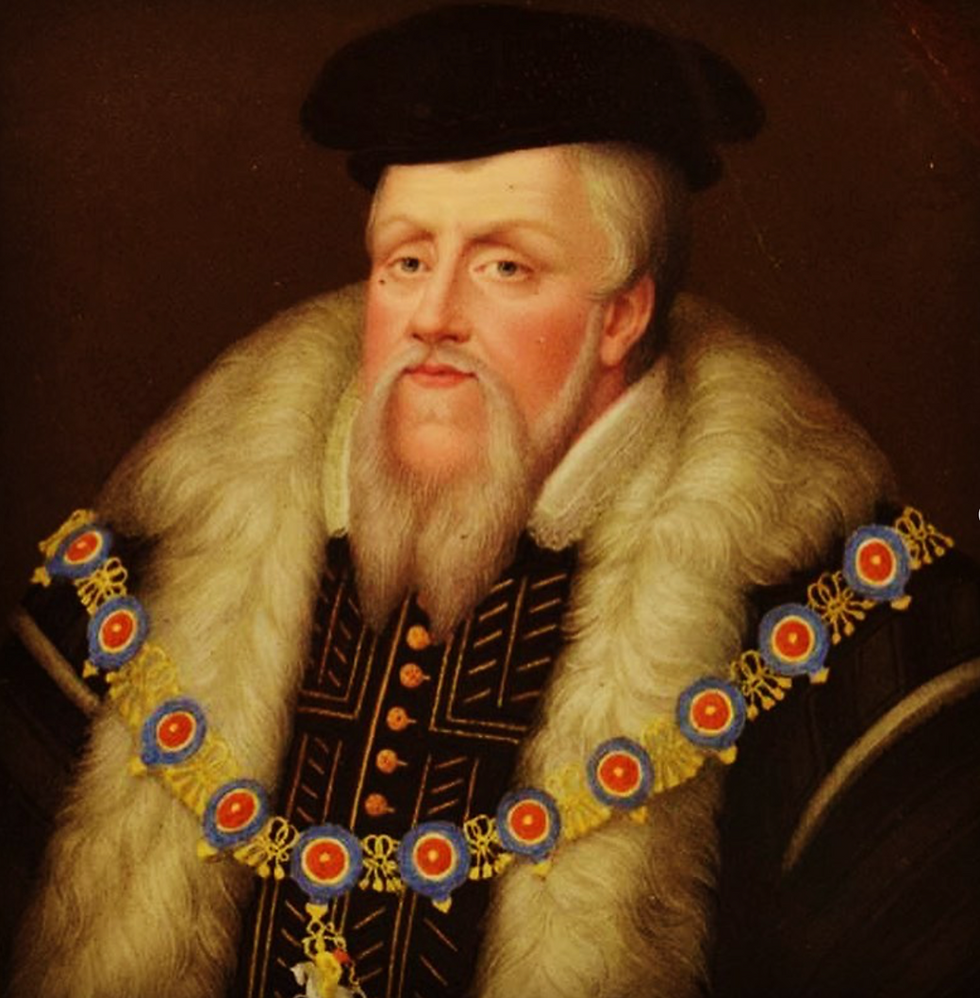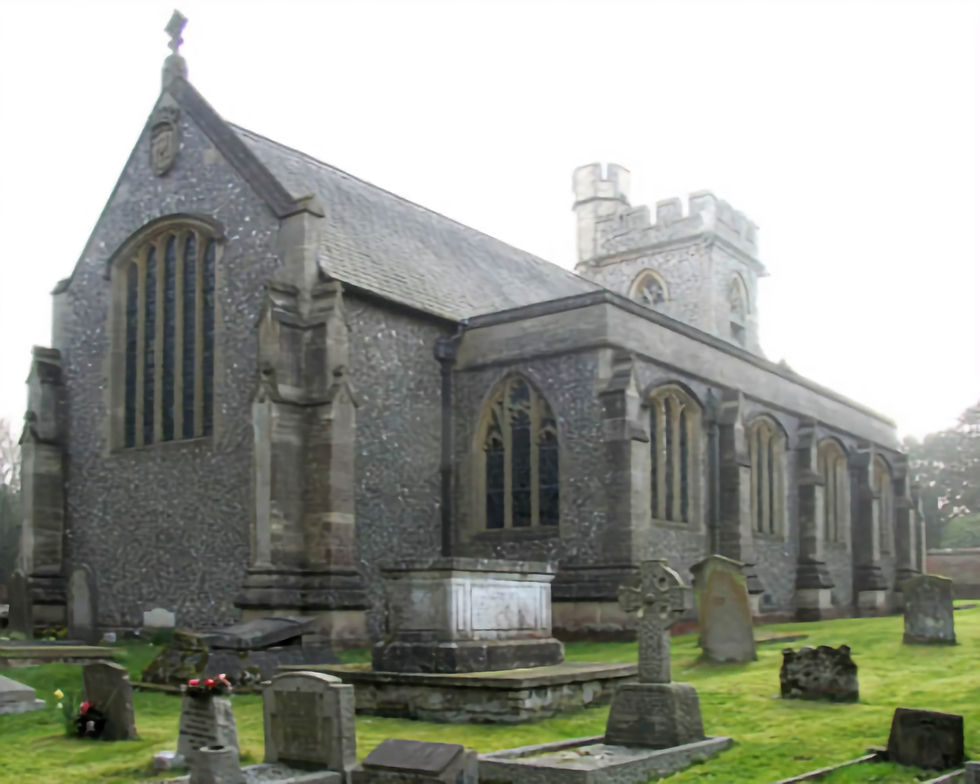The Death and Funeral of Francis Russell, 2nd Earl of Bedford, 1585
- thedudleywomen
- Sep 14
- 7 min read
Updated: Oct 19

Francis Russell, 2nd Earl of Bedford, had been a popular and active courtier during the reign of Elizabeth I, following in the footsteps of his father, John Russell, 1st Earl of Bedford, a high-ranking councillor during the reigns of the three previous monarchs: Henry VIII, Edward VI and Mary I. As the only son and heir of the first Earl, it was said that he owed his initial position at court and parliament to his father's success and legacy; however, Bedford was able to prove himself and step out of his father's shadow, creating his own successful career. His 'polished manners', 'easiness of temper' and intelligence, in addition to his progressive Reformist views, led to the queen holding him in high esteem. He was subsequently rewarded by the bestowing of multiple appointments and commissions throughout his career, including that of Privy Councillor and Ambassador to France, as well as being appointed to the coveted Order of the Garter, the oldest and most senior order of knighthood. Being educated at Cambridge, he was known to have spoken many different languages, including French, Italian and Latin; on his death, manuscripts written in Italian and Latin were bequeathed to his heirs (Wiffin, 1833; History of Parliament, 2025).
During his later years, Bedford's health began to decline, leading to limitations in his court and parliamentary duties. By July 1585, after suffering from a variety of 'maladies', he had developed gangrene: a serious condition where reduction or loss of blood supply leads to body tissue dying, particularly in the extremities, including toes, feet, fingers and hands. Bedford was forced to undergo "the torture of the lancet", likely with the intent of relieving the pain which can be caused by swelling, sores and blisters of the infected area (Wiffin, 1833, p.551; NHS, 2025).

This intervention provided Bedford with some alleviation of his symptoms, although it was said that he faced his health issues with 'fortitude' and 'patience'.His health stabilised for a short-time, enabling him to receive a visit from the queen. However this relief was only temporary, as the infection continued tp spread, and Bedfordl's health continued to deteriorate. With nothing more to be done, the Earl died at his Westminster home, Bedford House (previously known as 'Russell House'), located on The Strand, within the parish of St Clement Danes , in his 58th year (Wiffin, 1833; History of Parliament, 2025).

Following Bedford's death, preparations were made for his funeral, in accordance to his will, which had been written the previous year, on 07 April 1584, likely when his health was starting to fail. His first request was for "my bodie...to be buried in the parish church of Cheynes", the manor estate in Buckinghamshire that he had inherited on his mother's death in 1559, which had become the family seat for the Russell family, and later the Earls of Bedford, on his parents's marriage in 1526. Requests were made for twenty sermons to be preached for him, within five months of his death, "by godly, learned and discreet ministers", including at Cheynes. Bedford also made provisions for "the poor folke" of his estates, including Cheynes and Woburn Abbey, in addition to plans for a scholarship for "two poor students of divinity" attending University College, Oxford and founding a school at Woburn, his patronage and encouragement of learning continuing after his death (Wiffin, 1833; History of Parliament Online, 2025; The National Archives, 2025).

On 12 September 1585, John Stanhope a gentleman of the Privy Chamber, was sent by Elizabeth I to visit the "mourning ladies, and to comfort them from her": Anne, Countess of Warwick, and her younger sister Margaret, Countess of Cumberland (Folgerpedia, 2025). The sisters had retreated to 'North Hall', the manor of Northaw, Hertfordshire, that had been granted to Anne's husband Ambrose Dudley, 3rd Earl of Warwick the previous decade, and at which the couple had made their primary residence away from court. Margaret was heavily pregnant at this time; she delivered her second child, son Robert, nine days later on 21 September, whilst still staying at Northaw. Robert's birth is memorialised in the impressive composite painting, 'The Great Picture', commissioned by his younger sister Anne Clifford, six decades later. Anne appears to have returned to court, being a long-time member of the queen's household, accompanied by her brother-in-law George Clifford, 3rd Earl of Cumberland, after her father's funeral; however, she only remained one night, before returning to Northaw, likely due to news surrounding her sister's labour. There appears to be lots of activity at Northaw during September 1585, with Warwick being in residence, and his younger brother, Robert Dudley, 1st Earl of Leicester, visiting him repeatedly, whilst arrangements were being made for his deployment to the Netherlands (Google Arts & Culture, 2024; Folgerpedia, 2025).

On 14 September 1585, Bedford's funeral was held with great pomp and ceremony at Cheynes, six weeks after his death, His body having been transported from Westminster to Buckinghamshire. A great funeral procession accompanied the coffin, carried by six yeoman, from the manor house, to the Church of St Michael, located within the grounds of the estate. Heralds were adorned with the Russell crests, whilst gentleman carried banners, an expected sight at an aristocratic funeral. Bedford's son-in-law and former ward George Clifford, 3rd Earl of Cumberland, acted as his chief mourner, whilst other male relatives attended, including his only surviving son Sir William Russell, nephews 'the Lord [John] St John' and 'Mr Oliver St John', and stepson-in-law Arthur Grey, 14th Baron Grey de Wilton. It is also known that his old friend and ally Leicester, with whom he had fought alongside at the Siege of Saint-Quentin in 1557, left the royal court at Nonsuch Palace, to attend Bedford's funeral (Wiffin, 1883; Folgerpedia, 2025).
The funeral sermon was delivered by Dr Thomas Sparke, Puritan Doctor of Divinity, a copy of which being later published, Sparke having "beene earnestly vrged, & entreated...to commit the same to writing, and so to the print". In his sermon, Sparke notes the unfortunate death of Bedford and his three eldest sons, highlighting how some may question whether this was God displaying "anger and displeasure towardes him and his house", although continues to highlight the positive attributes of an admired and pious man (University of Michigan, 2025),
![Tomb effigies of Francis Russell 2nd Earl of Bedford and Margaret St John, Bedford Chapel, St Michael's Church, Chenies © IanAWood [Flickr]](https://static.wixstatic.com/media/ed9b82_50a1601b193547d69356d48770852227~mv2.jpg/v1/fill/w_980,h_784,al_c,q_85,usm_0.66_1.00_0.01,enc_avif,quality_auto/ed9b82_50a1601b193547d69356d48770852227~mv2.jpg)
Bedford was later interred in the Bedford Chapel within the church; this was the chapel that had been commissioned by his mother Anne Sapcote, Countess of Bedford, in accordance with his father, John Russell's will. Completed and consecrated in 1556, the chapel subsequently became the mausoleum of the Russell family, even after the abandonment of Cheynes for Woburn Abbey as their principle seat in the 17th century. Bedford was interred with his first wife, Margaret St John, who had died from smallpox in August 1562, their marble and alabaster tomb topped with matching tomb effigies of the couple, their eyes gazing upwards, their hands joined in prayer. A large heraldic shield, of Russell impaled with St John, sits at the head of the monument, along with other symbols associated with their ancestry, including the goat and yale (Wiffin, 1833; Middlesex Heraldry Society, 2025).




![© NorfolkBoy1 [flickr]](https://static.wixstatic.com/media/ed9b82_3d02b3ab1bfa46f28f904510704b5da5~mv2.jpg/v1/fill/w_980,h_784,al_c,q_85,usm_0.66_1.00_0.01,enc_avif,quality_auto/ed9b82_3d02b3ab1bfa46f28f904510704b5da5~mv2.jpg)
Comments